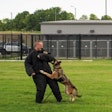They may not come from Wall Street but business is booming for street gangs trafficking in drugs.
We all know that drug use and sales are part of the gang subculture. Lately, more street gangs have become involved in drug trafficking. This increased effort in drug transport and sales has led to the development of unique relationships between a few gangs that are normally rivals. These business relationships are based on the drug trade and the effort is to make money.
A recent United States Department of Justice report indicated, of the gangs involved in drug trafficking, "Thirty-three percent are involved in drug distribution for the purpose of generating profits for the gang."
There are several suggested reasons to explain the involvement of street gangs in drug trafficking. According to the Office of Juvenile Justice and Delinquency Prevention, some academic researchers believe that many "youth gangs were transformed into drug trafficking operations during the crack cocaine epidemic" during the late 1980s. (Juvenile Justice Bulletin, December 1999.) Other academic researchers believe the extent of "youth gang involvement in drug trafficking is unclear."
The Street Gang Defined
For us in the trenches what does this mean?
A few of factors detemine the impact of "youth gangs" and drug sales in your jurisdiction. First, is the definition of a street gang that you use. What exactly is a youth gang? Are all the members younger than 18 years old? What happens to gangs in which the majority of members are adults? Are they a composite gang or an adult gang? A street gang is a street gang. Membership age can range from 8 to 70 years of age. Some researchers define the term "youth gang" as a group with a membership of young adults or youths.
Ad hoc law enforcement studies indicate about 60 to 70 percent of street gang members are between 14 and 24 years of age. But the majority of gang members in the country are adults, not juveniles.
Why not just keep it simple? A street gang is three or more, with some type of common identifier and the group commits clime. Age thus does not become a qualifier to define youth gangs verses adult gangs. We are concerned with street gangs.
The Drug Factor
Second, drug sales and use have been part of the street gang subculture since the mid-1800s. Drugs have been traditionally sold to make money. Drugs are used for recreation, to escape reality, for sex, to increase a market base, for social interactions, for income and as currency within the street and prison gang subculture.
A popular misconception is that many street and prison gangs control certain drug markets. 1l1is is simply not true. Research by the National Drug Intelligence Center (NDIC) has shown that in reality a few street gangs have an organized control within specific drug sales turf. At one time a limited number of Blood and Clip street gangs demonstrated this level of organization and drug trafficking. Having an established national base seems to be a key factor in forming these types of street gang organizations.
Recently, other street gangs have established themselves on a national basis. Mara Salva Trucha, Sinoloan Cowboys, the Border Brothers, 18'" Street, Ghost Shadows, Gangster Disciples, Vice Lords and the Tiny Rascal Gang are just a few. If a national basis is a precursor for organized drug sales, these types of street gangs may join the ranks of the street gangs that control certain drug markets or drug sale turfs. In the 1999 NDIC, National Street Gang Survey Report Executive Summary a great example of this can be found. The Rolling 60s Crips, a nationally based street gang involved in organized dl1lg sales, was reported in 59 jurisdictions within 23 states.
By far, the majority of gang members who are involved in drug trafficking are independents, at street-level distribution. They are not part of an organized drug gang or organized crime group. For street cops, business will be as usual. Gang members at this level of drug trafficking will run from you, hide the dope and normally work within a well-defined sales turf. More importantly, the Current trend is that more of these gang members are younger and are armed.
These individual gang members can amass a small fortune of money, specifically from drug sales. The large amount of money can offer the opportunity for the individual gang member to assume leadership of his/her gang. It can also allow for the purchase of larger quantities of drugs, expanding of the market, the employing of other gang members and the chance to become a larger dealer. Does it happen? Today, there are a few 18'" Street, Blood and Crip millionaires. The drug trafficking business can be lucrative.
Taxation
A third factor is the impact of prison and street gangs on street level drug distribution. Since more and more street gang members are getting involved in drug sales, this offers an opportunity for some street and prison gangs to try and collect a tax on these sales. Non-gang member drug dealers in some areas of the country are paying the local street gang a tax for the right to sell drugs in the street gang turf. Some 18th Street gang members are involved in this type of activity. In fact, some 18th Street cliques are known to even tax local prostitutes and street vendors.
Prison gangs can also try to levy a tax on drug sales by street gang members. The Mexican Mafia, a well-known and nationally established prison gang is currently collecting a tax from some Southern California Latino street gangs. Individual gang members and street gangs that do not pay the tribute are placed on a "green light" list by the prison gang. This allows the tax paying street gangs to assault or kill those on the green light list.
Hired Help
Fourth, a more recent trend has been identified. Mexican-based drug cartels have been recruiting and employing street gang members from the southwestern part of the country. The Mexican drug cartels supply a large amount of the illegal drugs that come into the United States. As Mexican cartel drugs reach central, northeast and southern states, street gang members can be recruited to help transport, guard and sell the drugs. Street gang members have also been used to collect drug monies and act as muscle for the drug cartels.
Temptations Are Real
Fifth, drug traffickers can offer very lucrative rewards for law enforcement assistance. Sworn criminal justice professionals including prosecutors, police, probation and corrections officials have been involved or implicated in drug trafficking operations. Often, the motivating factor is money. In foreign countries, this can become a major problem.
Drug Use Among Gang Members
Academic research indicates that on average between 43 and 78 percent of street gang members are involved in drug trafficking. Debriefings with street gang members indicate that at least occasional use of alcohol, marijuana, cocaine, crack, methamphetamine, heroin and LSD is common for the majority of gang members. Some gang members indicate that 99 percent of their fellow gang members use drugs on an occasional basis.
There have been no formal studies to determine how frequently inhalants are used or how designer drugs, such as MDMA (ecstasy) fit into the street gang drug trafficking profile. These kinds of drugs are also very popular among the general 14 to 24 age group.
Raking in the Profits
Academic research does report nationwide drug sales by street gangs are especially high in large cities and suburban counties. In 1997 street gangs were estimated to be involved in 33 percent of the crack cocaine sales, 32 percent of the marijuana sales, 16 percent of the powdered cocaine sales, 12 percent of the methamphetamine sales and 9 percent of the heroin sales nationwide. Has street gang participation in drug sales increased during the past three year's? What do you think?
Street gangs that have traditionally not been involved in drug trafficking have now stm1ed to get involved. For example, many of the country's skinhead gangs have historically not sold drugs. Within the last couple of years some skinhead
gangs have ventured into the drug trafficking business at the local level. Methamphetamine and marijuana seem to be the commonly sold drugs, although a few gangs have been involved with LSD. The presence of groups like the Nazi Low Riders has also made an impact on the methamphetamine market.
Gang migration has also been reported as a factor that effects street gang drug sales. A few gangs have attempted to start drug franchise businesses in rural parts of the country. It can no longer be considered an isolated incident when California-based gang members relocate out of state to sell drugs. I am not saying this is happening in epidemic proportions, but rather more frequently. Inter and intra-state migration will become increasingly more influential in drug trafficking by street gangs. Be safe!
Al Valdez is an investigator with the Orange County (Calif.) District Attorney's Office and is author of the book, Gangs.













